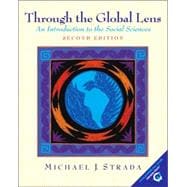
| UNIT I THE HUMAN DRAMA: THROUGH THE GLOBAL LENS AND THE SOCIAL SCIENCES | |||||
|
1 | (34) | |||
|
35 | (22) | |||
| UNIT II PHYSICAL SETTING UNDERLYING THE HUMAN DRAMA | |||||
|
57 | (18) | |||
|
75 | (33) | |||
|
108 | (36) | |||
| UNIT III SUBJECTIVE INFLUENCES ON THE HUMAN DRAMA | |||||
|
144 | (29) | |||
|
173 | (25) | |||
|
198 | (23) | |||
| UNIT IV SOCIOCULTURAL INFLUENCES ON THE HUMAN DRAMA | |||||
|
221 | (31) | |||
|
252 | (47) | |||
|
299 | (32) | |||
| UNIT V DIRECTING THE HUMAN DRAMA: POLITICS AND GOVERNMENT | |||||
|
331 | (27) | |||
|
358 | (31) | |||
| UNIT VI PRODUCING THE HUMAN DRAMA: HUMAN AND NONHUMAN RESOURCES | |||||
|
389 | (29) | |||
|
418 |
The New copy of this book will include any supplemental materials advertised. Please check the title of the book to determine if it should include any access cards, study guides, lab manuals, CDs, etc.
The Used, Rental and eBook copies of this book are not guaranteed to include any supplemental materials. Typically, only the book itself is included. This is true even if the title states it includes any access cards, study guides, lab manuals, CDs, etc.